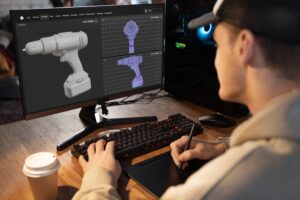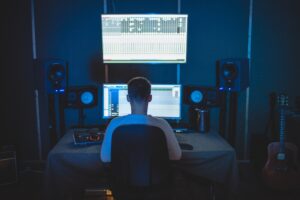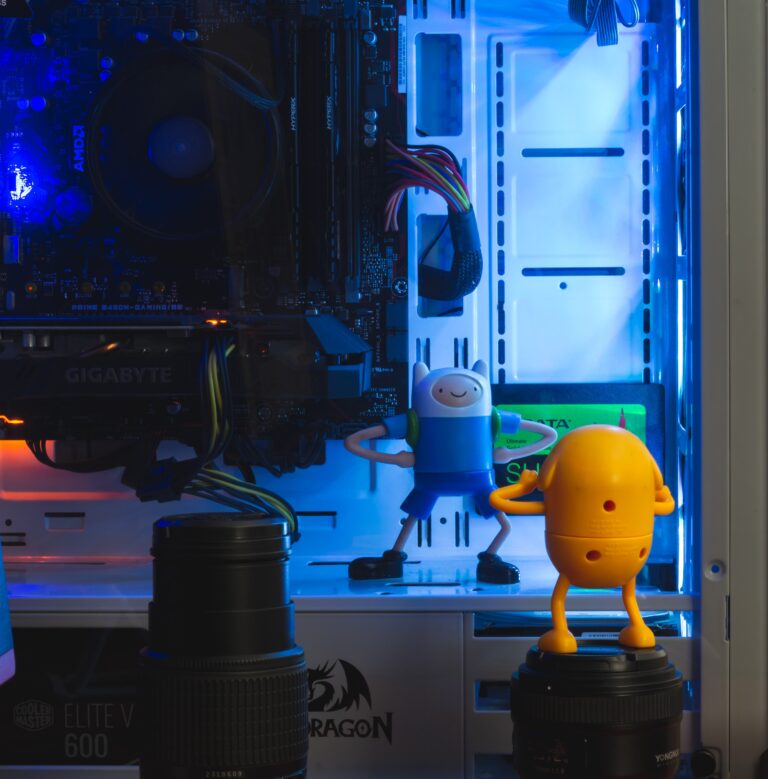Table Of Contents
Whether you’re creating an explainer video, a short film, or a commercial, incorporating music can take your animation to the next level. In this blog, we’ll explore the different ways that music can be used in animated videos, from choosing the right track to syncing the music to the animation. We’ll also discuss the technical aspects of working with music in animation and provide tips and tricks for getting the most out of your music. So, if you’re looking to add a new dimension to your animation, read on and discover the magic of using music for animated videos :
Understanding the role of music in animation: In this section, we’ll discuss the different ways that music can be used in animation, from setting the tone and mood to creating a sense of pacing and tension. We’ll also look at how music can be used to tell a story and convey emotions.
Choosing the right music for your animation: This section will cover how to choose the right music for your animation, including tips on finding the perfect track, working with composers, and licensing music.
Syncing music to animation: Once you have your music, it’s important to sync it to your animation. We’ll discuss the technical aspects of working with music in animation, including how to create a sound design, how to use audio editing software and how to time the animation to the music.
Tips and tricks for working with music in animation: This section will provide practical advice and best practices for working with music in animation, such as how to use music to create a sense of energy and how to avoid common mistakes.

Understanding the role of music in animation
Music plays a critical role in animation by enhancing the emotional impact of the visuals and helping to tell the story. In animation, music can be used to set the tone and mood of a scene, create a sense of pacing and tension, and convey emotions.
Music can also be used to underscore a character’s emotional journey, whether it be a sense of wonder, suspense or nostalgia. Furthermore, it can also be used to create a sense of energy and excitement, or to provide a background for a comedic scene.
Additionally, music can be used to create a sense of place or time, such as using traditional music to evoke a historical or cultural setting. Overall, music in animation serves as a powerful storytelling tool that can help to bring the animation to life and make it more engaging and memorable for viewers.
Choosing the right music for your animation

Choosing the right music for your animation is a critical step in creating an engaging and memorable experience for viewers. Here are some tips for choosing the right music for your animation:
-
Understand the tone and mood of the animation: The music you choose should reflect the tone and mood of the animation. For example, if the animation is a comedy, the music should be playful and upbeat, whereas if the animation is a drama, the music should be more emotive and serious.
Match the music to the style of the animation: The music should also match the style of the animation. For example, if the animation is hand-drawn, the music should be more organic and traditional, whereas if the animation is computer-generated, the music can be more electronic and experimental.
Consider the story and characters: The music should also reflect the story and characters of the animation. For example, if the animation features a heroic character, the music should be more heroic and epic, whereas if the animation features a villain, the music should be more sinister and menacing.
Think about the pacing of the animation: The music should also reflect the pacing of the animation. If the animation is fast-paced and action-packed, the music should be more energetic and upbeat, whereas if the animation is slow-paced and contemplative, the music should be more reflective and introspective.
Take inspiration from other animation and films: Take inspiration from other animation and films that have used music effectively to find the right track that fits your animation.
Get feedback from other people: Show your animation with different music options to other people, and get their opinion on which music works best with the animation.
Ultimately, the most important thing is to experiment and have fun with it, as you might find that a track that you never thought would work, fits perfectly with your animation.
Syncing music to animation

Syncing music to animation is the process of timing the animation to the music, so that the two elements work together seamlessly. Here are some tips for syncing music to animation:
-
Start with a rough cut of the animation: Before syncing the music, create a rough cut of the animation, including all the key scenes and transitions. This will give you a good idea of the pacing and timing of the animation, and help you to choose the right music.
Break down the music into sections: Break down the music into sections, such as verses, choruses, and instrumental sections. This will make it easier to match the music to the animation.
Use a metronome or click track: Use a metronome or click track to keep the animation and music in sync. This will help you to match the animation to the music, and ensure that the two elements are timed correctly.
Time the animation to the music: Time the animation to the music by adjusting the timing of the keyframes and animation curves to match the music. This will ensure that the animation is timed correctly and that the two elements work together seamlessly.
Use sound design software: Use sound design software, such as Pro Tools, Logic Pro, or Adobe Audition, to edit and mix the music and sound effects. This will allow you to tweak the timing of the music and sound effects, and ensure that they match the animation perfectly.
Test and refine: Once you’ve synced the music to the animation, test it out and refine it as needed. Watch the animation with the music several times, and make any necessary adjustments to the timing of the animation and the music.
Syncing music to animation can take some time and experimentation, but by following these tips, you can create a seamless and engaging experience for viewers.
Tips and tricks for working with music in animation

Here are the summarised tips, tricks, and common mistakes to keep in mind when using music in animated videos:
Tips:
-
Experiment with different types of music to find the right track for your animation.
Use music to create a sense of energy and excitement, or to provide a background for a comedic scene.
Take inspiration from other animation and films that have used music effectively.
Use music to underscore a character’s emotional journey.
Get feedback from other people on which music works best with your animation.
Tricks:
-
Use a metronome or click track to keep the animation and music in sync.
Break down the music into sections to make it easier to match the music to the animation.
Use sound design software to edit and mix the music and sound effects.
Time the animation to the music by adjusting the timing of the keyframes and animation curves.
Common Mistakes:
-
Choosing music that doesn’t match the tone and mood of the animation.
Not syncing the music to the animation correctly, which can cause the two elements to feel disjointed.
Overusing music, which can become overwhelming for viewers.
Using copyrighted music without obtaining a proper license.
Some Examples For You :
-
Disney’s “Frozen” uses music effectively to tell the story of the characters and to convey emotions. The song “Let it Go” is a good example of how music can be used to underscore a character’s emotional journey.
Studio Ghibli’s “Spirited Away” uses music to create a sense of wonder and to transport the viewer to a magical world.
Cartoon Network’s “Adventure Time” uses music to create a sense of energy and to provide a background for comedic scenes.
Overall, music is a powerful tool that can be used to enhance the emotional impact of animated videos, making them more engaging and memorable for viewers. By keeping these tips, tricks and common mistakes in mind, you can use music effectively to take your animation to the next level.

